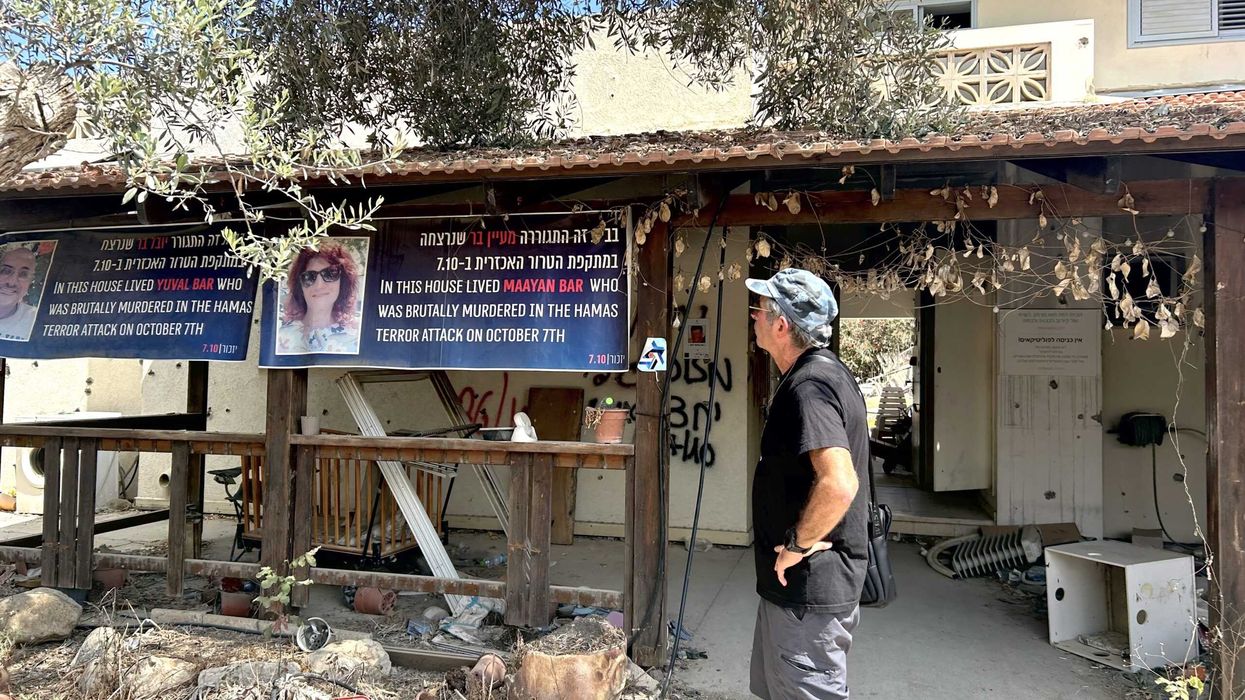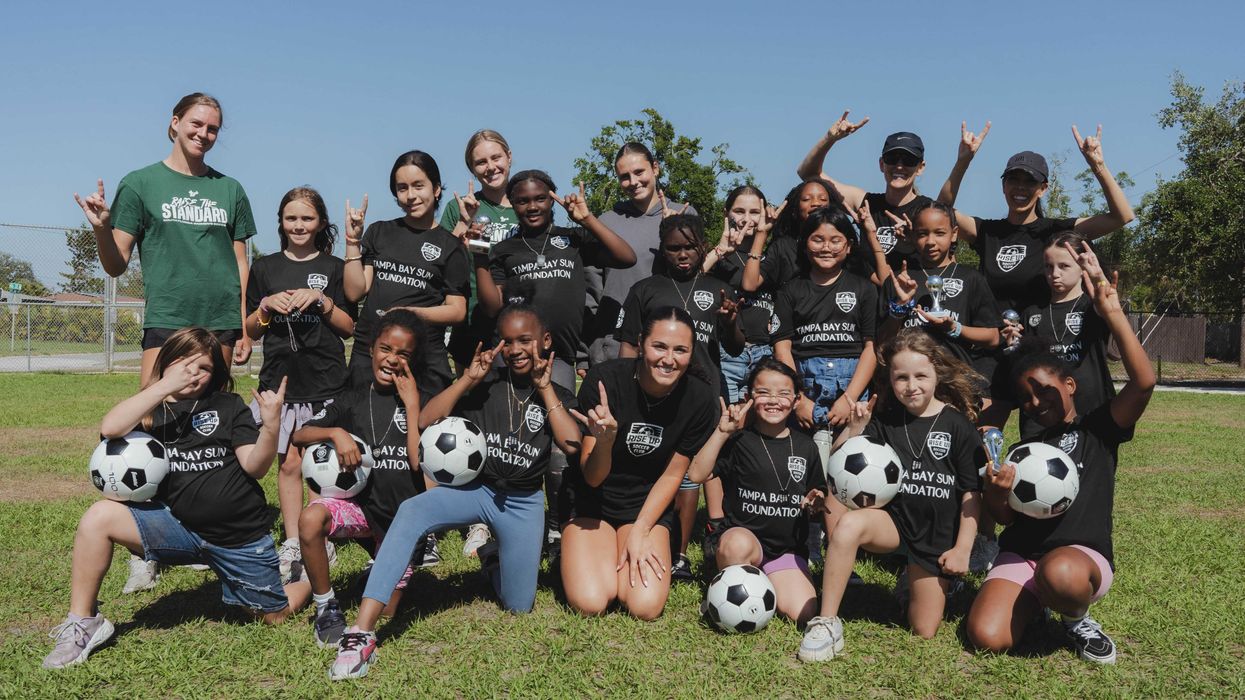As ceasefire negotiations are set to begin in Egypt as early as this week, President Trump announced via his Truth Social platform that Israel has accepted an “initial withdrawal line” within Gaza. He added that “when Hamas confirms, the Ceasefire will be IMMEDIATELY effective.
Esteban Balta, a student at Northwestern University, was part of a group of students who visited Israel in August participating in a Fuente Latina fellowship.
In Israel, there are more than 100,000 Latin American immigrants. Most of them came from Argentina since the founding of Israel. Since the 1980s, immigrants have primarily come from Colombia and Ecuador. Some have spent their entire lives there, others arrived more recently. Nevertheless, all are part of the Israeli community—and as a result, they suffer alongside the country.
Two months before the anniversary of Hamas’s invasion of Israel, two of its victims—Latin American immigrants—share the difficult experiences they’ve endured, and as if that weren’t enough, the struggle to rebuild their lives both physically and emotionally.
On October 7, 2023, Israel was the victim of a terrorist attack by the group Hamas. The Israeli Defense Forces (IDF) took hours to respond, and as a result, nearly 1,200 people were killed by Hamas. The group attacked kibbutzim (closed communities), the Nova festival, and several military bases.
Today, Tzvi Alon walks through Kibbutz Be’eri, retracing the traces of tragedy. Houses remain collapsed, wood and bricks scattered across the ground. Bullet holes mark the walls. Burn marks still stain the homes. Where more than a thousand people once lived, fewer than a hundred remain. Sounds of construction echo through the neighborhood as a sign of rebuilding—but they’re drowned out by the sound of bombs across the border, where the war in Gaza continues, a haunting reminder of how it began.
Tzvi Alon, an immigrant from Argentina who arrived in Israel at age 14, recounts the story of Kibbutz Be’eri during the invasion:
“They were saying, ‘My house is burning, come help me. My husband is injured, I need help…” Alon described the flood of WhatsApp messages and his own opinion: “A tsunami of terror hit us here.”
Tragically, it was through WhatsApp that he learned of the murder of his friend Manny.
“He tells me, ‘They killed Manny.’ For me, it was like a bomb.”
Alon showed his house and the shelter room—a smaller space than a bedroom, with only a lock to protect them from the violence outside. Fortunately, the terrorists didn’t enter his home, and he and his family survived.
Alon and his family spent thirty hours in the shelter before learning that the terrorists had reached other kibbutzim. Thirty hours of death and destruction across Israel.
But Alon isn’t the only one reliving trauma. Alejandra López returned to the site of the Nova festival invasion, where she escaped and survived an attack by the same group that killed Alon’s neighbors. She came with her partner, her son, and Sol, her emotional support dog. The desert where the festival was held is now a labyrinth of faces and monuments commemorating the murdered and still-captive victims. The cries of visitors echo through the memorials—a reminder of the tragedy.
López is a Colombian immigrant who has lived in Israel for ten years. The Nova festival was held annually, but now it will be remembered as a horrific tragedy.
She recounted how she escaped death during the festival. At first, there was confusion, and people didn’t understand the danger they were in.
“I started to see something very unusual in the sky. I really began to notice certain… I don’t know how to explain it, but strange movements, which I assumed were part of the party,” López said, describing the calm before the storm.
“And suddenly I see someone—one of my friends—standing in the middle of the road, completely covered in blood. His face, his hands, everything.”
López described this moment in detail as the first shock, realizing the danger was imminent and her life was at risk.
She explained how the confusion among the crowd created more panic. She was with three friends trying to escape in a car when they hit traffic that was impossible to flee. One friend went to investigate, leaving her and two others alone in the car.
“My desperation to not stay in the car was rising. Something inside me kept saying, ‘Go, go, go, go,’” López said, describing how she and her friends ran for their lives.
After reuniting with her friend, the group hid in a ditch with about 100 people.
“They started throwing grenades where we were. We stood up and started running again. I don’t know what happened to the people who were with me to this day—I just don’t know.”
López’s escape separated her group until only she and one friend remained, listening to the terror around them.
“Basically, they were hunting us—it was like a game to them… We heard how they pulled girls from the holes, how they tortured them, and tortured the boys,” López said, describing the horror that drove her to despair.
“I felt like I didn’t want to die, but I was tired and didn’t want to be found. So I told my friend, ‘Let’s hug. I know a bullet will hit us at any moment, but let it hit us both.’”
Though she gave up in that moment, she regained her strength and kept fighting. Eventually, a soldier with water and supplies helped restore her hope. López was finally reunited with her friends and partner, where she could finally breathe again.
Both stories recount trauma that the state of Israel is still recovering from as the war continues.
López said:
“That day, they killed a part of me that’s still dead to this day.”
Brick by Brick: Stories of Survival and Resilience In Israel was first published in Spanish language as Reconstruyendo Ladrillo por Ladrillo on actualidad and re-published in English with permission.
Esteban Balta is a student at Northwestern University. He was a fellow with Fuente Latina, an organization that sponsors journalists and students to visit Israel. Esteban is the son of Hugo Balta, executive editor of the Fulcrum and publisher of the Latino News Network.
The Fulcrum is committed to nurturing the next generation of journalists. To learn about the many NextGen initiatives we are leading, click HERE.




















 Shannon Gormley, Rhode Island Public Schools
Shannon Gormley, Rhode Island Public Schools Les Sinclair, Blue Ridge Area Food Bank
Les Sinclair, Blue Ridge Area Food Bank Elena Casillas Hoffman,
Elena Casillas Hoffman, 
 Darrious Hilmon, Executive Director, CAN-TV
Darrious Hilmon, Executive Director, CAN-TV